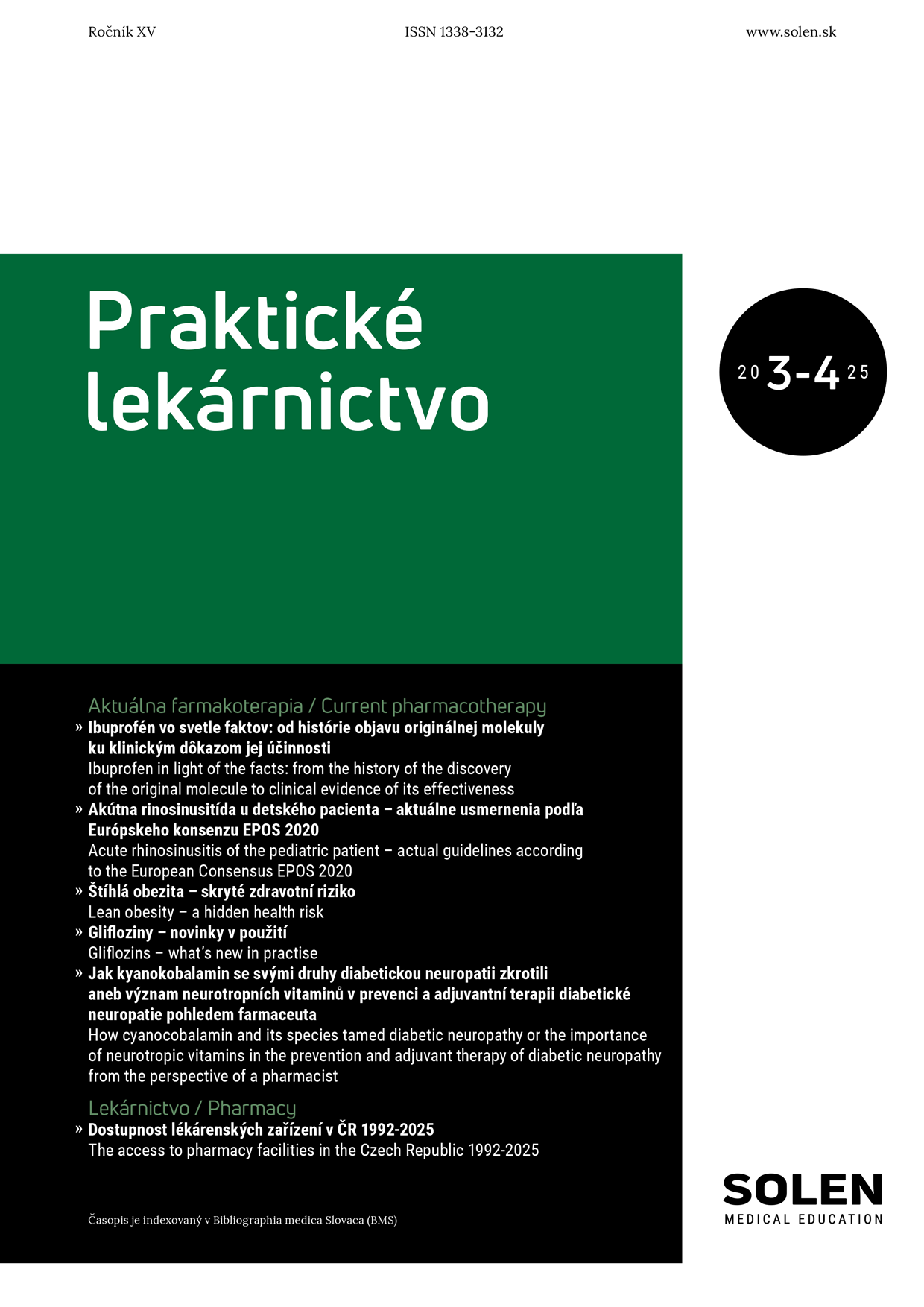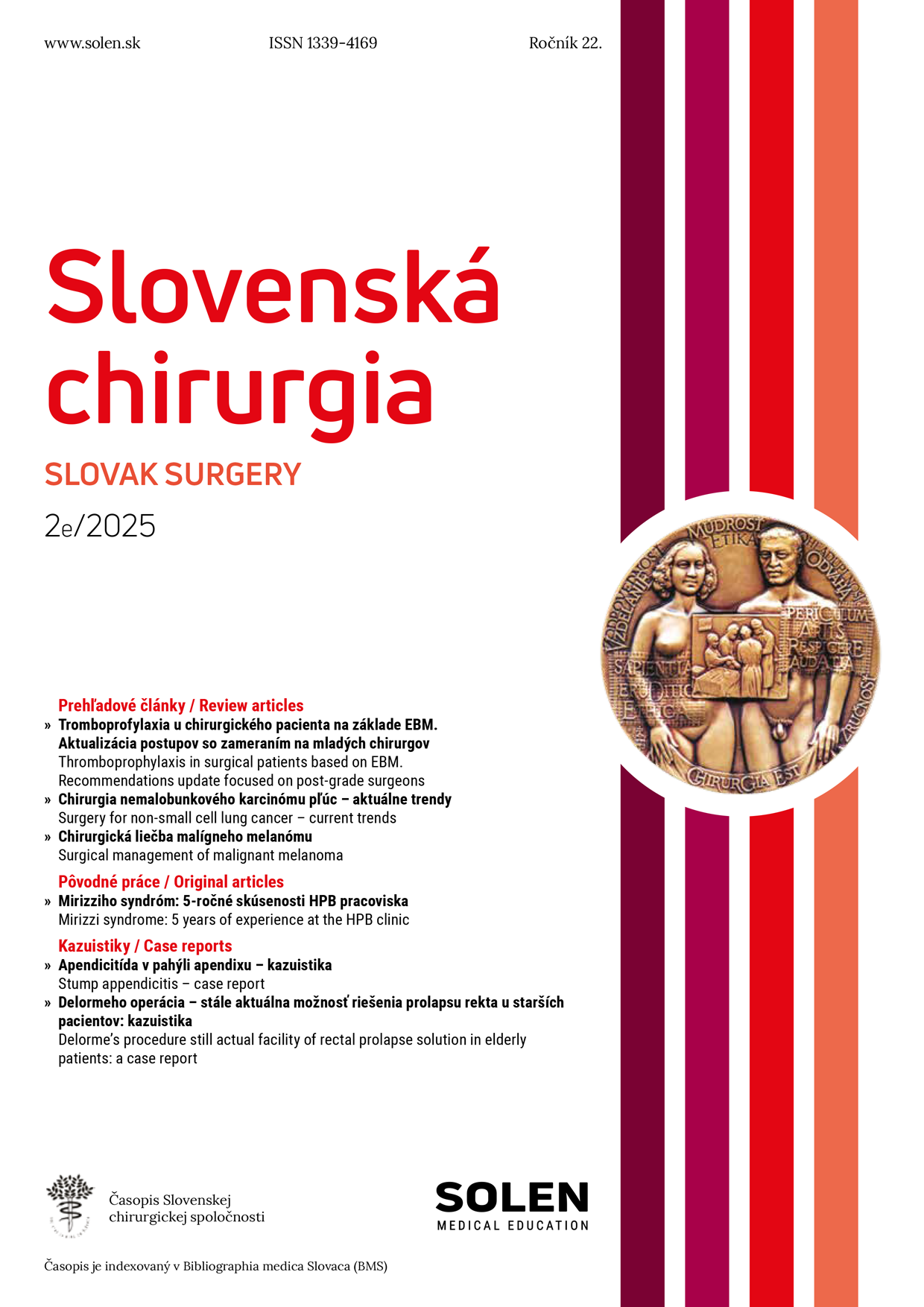Slovenská chirurgia 3/2020
Bouveret’s syndrome – the most uncommon presentation of cholecystolithiasis, case report
Bouveret syndrome is the most rare complication of cholecystolithiasis. This is a obstruction of the duodenum by a gallstone, which was excreted there most often via the cholecystodododenal fistula, followed by a high ileus. Typically, this is the disease of an older population, more often women than men, with a long-term history of cholecystolithiasis. Clinical symptoms are often uncharacteristic and vague, but can often be serious due to dehydration, mineral breakdown and shock. The most important role in diagnosing plays gastroscopy with CT or MRI. The endoscopic extraction is the first choice of treatment, followed by surgical treatment in case of failure. In our case report, a case of a patient with a known cholecystolithiasis presenting with the gastric outlet syndrome, later diagnosed as Bouveret syndrome, is described. After failure of the endoscopic extraction, she underwent an operative extraction of stone without a cholecystectomy and fistula closure, and was released to a home after 9 days after surgery.
Keywords: cholecystolithiasis, duodenal obstruction, endoscopic treatment, duodenotomy, stone extraction

















